Kimchi is one of my absolute favorite foods. Spicy, flavorful and chock full of Korean cabbagey yumminess, I could easily eat a whole jar of it in one sitting if I have the opportunity. But it’s pricey stuff (often $7-$8 per small jar in stores!). So, I’ve had to content myself with sparing tidbits here and there. Up until now!
I always thought you needed to have some sort of traditional Korean specialty crock and bury kimchi in the ground for ages to achieve the proper level of fermentation and flavor. But it seems that you can create that delectable Korean specialty at home with equally amazing results.
And since I have recently learned that kimchi is a wonderful probiotic food, I’m even MORE excited to make my first home made batch. Yummy, cheap, and great for you? Count me in!!!
Kimchi is sort of a Korean kind of sauerkraut-esque condiment served with most meals. It’s main ingredient is cabbage (usually Napa cabbage) that’s very spicy and fermented. Sometimes, various kinds of vegetables, such as daikon radish, carrots, or asian pear are added. Red pepper, a bit of fish sauce, ginger and garlic round out the flavors and fermentation seals the deal. YUM.
Health-wise, kimchi is also a great source of beta-carotene, iron, calcium and vitamins A, C, B1 and B2. The probiotic strain it contains is lactobacillus kimchii though it also has other lactic acid bacteria that are beneficial to our gastrointestinal and immune systems.
Here’s how:
Equipment:
- Colander
- Large bowl or container like a plastic dishpan
- Large, Wide-Mouthed Glass Jar (Gallon)
- Knife
- Cutting Board
- Food Processor (or strong blender)
- Spatula
- Large Spoon
Ingredients:
- 4-5 Pounds of FRESH Napa Cabbage (Two)
- 1 Cup Kosher Salt
- 5 Green Onions, finely sliced
- Water
Kimchi Paste:
- Onion
- 1 Head of Garlic, peeled
- 1/8 Cup Peeled Ginger Root, diced
- 1/3 Cup Fish Sauce
- 5 Tablespoons Red Pepper Powder (Some recipes call for 10, so adjust to your liking)
- 2 Tablespoons Raw Sugar
- 1 Tablespoon Kosher Salt
Method:
- Start by making the Kimchi paste.
- Add all paste ingredients to a food processor and blend until smooth.
- Refrigerate until needed later (gives the flavors a chance to marry).
- Cut cabbage into pieces to your liking. 2×2 inches or so.
- Place in large bowl or clean plastic dishpan.
- Add 1 cup of Kosher salt and toss to fully coat leaves.
- Set aside for 1/2 hour, tossing a couple times while the cabbage is releasing its liquid.
- Cover with cold water and leave it for 4 hours.
- Drain well, rinsing a bit, but not thoroughly.
- Mix the cabbage, green onions, and Kimchi paste thoroughly, ensuring all leaves are coated.
- Taste. . .it should be fairly salty. If it isn’t, add Kosher salt bit by bit until it’s salty, but not overpowering or inedible.
- Pack into your big jar, tamping down firmly as you go to both pack tightly and to help the cabbage release more juice. A solid wooden rolling pin works well for this.
- The brine should come over the top of your cabbage.
- Seal tightly.
- Place in a cool, dark place to ferment. (If you don’t have such a place, I would just put it straight into the fridge and leave it there for at least a week. If you have too warm a temperature, the veggies can get mushy and there is more likelihood of overfermentation)
- When it gets to the level of sourness you find pleasant, transfer to the fridge.
- Depending on the temperature, that can take anywhere from about 5-7 days.
- Enjoy!
Refrigerated, it should keep for 6 months. Some recipes say 30 days, though most say much longer.
In my house, it would be lucky to last a week. The whole big jar! So, I may never find out how long it actually doeslast. But, as with most foods, if it smells, looks, or tastes ‘off,’ it’s best not to take a chance and throw it away.
Note:
Even in the fridge, Kimchi will continue to ferment slowly, so it will get more and more sour, maybe past the point it tastes good to you. If you do happen to contain yourself long enough for that to happen, you can still flavor soups or stews with it.

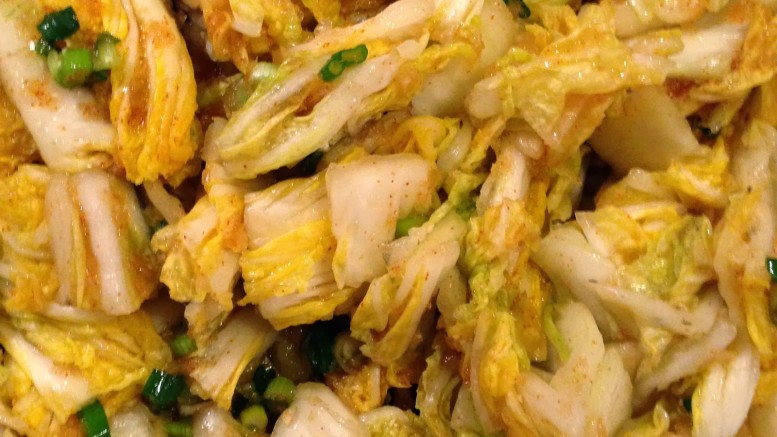
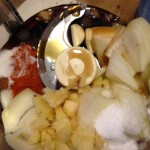
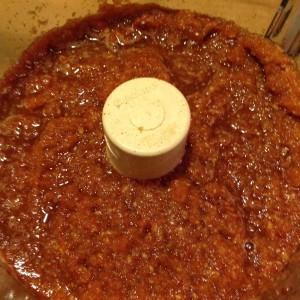
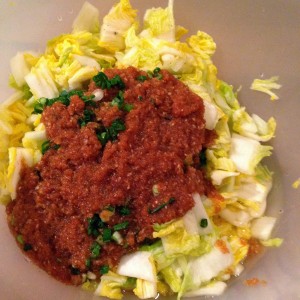
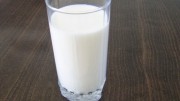
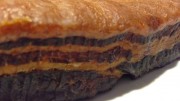


Be the first to comment on "Kimchi: Probiotic Food"